THCA Flower Color Chart: Complete Guide to Cannabis Color Variations
The world of THCA flower colors presents a stunning rainbow of possibilities that goes far beyond the stereotypical green cannabis imagery. Understanding this comprehensive cannabis color chart isn't just about aesthetics – it's a crucial skill for any serious cannabis enthusiast looking to make informed purchasing decisions and appreciate the complex genetics behind their favorite strains.
This complete weed color guide will transform how you view, evaluate, and select cannabis products. From the deepest purples to the brightest oranges, each color tells a story about genetics, growing conditions, and potential effects. Whether you're a cultivator seeking to understand phenotype expressions or a consumer wanting to make better-informed choices, this hemp flower color guide provides the knowledge foundation you need.
Color variations in cannabis aren't random occurrences – they're the result of complex genetic expressions, environmental factors, and specific compounds working together to create nature's most diverse plant palette. By the end of this guide, you'll be able to identify specific THCA color variations, understand what they indicate about quality and genetics, and use this knowledge to enhance your cannabis experience.
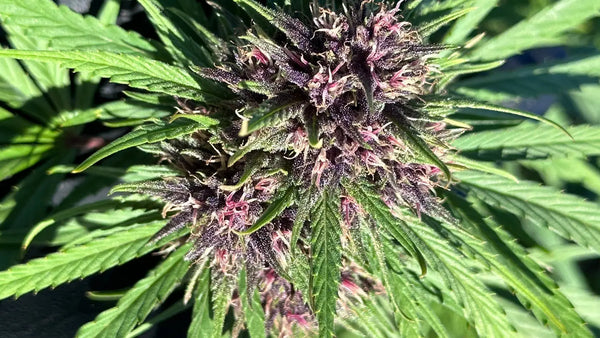
Understanding the Cannabis Color Spectrum
The cannabis color spectrum represents one of nature's most complex color systems, driven by multiple pigment families working in harmony or competition. Unlike many plants that rely on a single dominant pigment system, cannabis expresses colors through at least four major pigment groups, each responding differently to genetic triggers and environmental conditions.
This complexity means that a single plant can express multiple colors simultaneously, creating stunning visual displays that range from subtle gradients to dramatic contrasts. The marijuana color chart we'll explore encompasses primary colors that dominate most strains, secondary colors that appear under specific conditions, and rare colorations that occur in unique genetic lines or extreme growing situations.
Understanding these colors requires knowledge of the underlying biochemistry, but more importantly, it demands appreciation for how genetics, environment, and cultivation practices interact to produce the final visual result. Each color family responds to different triggers – temperature fluctuations, light spectrums, nutrient availability, and genetic switches that activate or suppress specific pigment production pathways.
Primary Cannabis Colors: The Foundation Trio
Green: The Chlorophyll Foundation
Green remains the foundational color in the complete THCA flower color guide, representing healthy chlorophyll production and optimal photosynthetic activity. However, green expressions range dramatically from pale lime-green sativas to deep forest-green indicas, with each shade telling a specific story about the plant's genetics and growing conditions.
Light green expressions typically indicate sativa-dominant genetics, high-stress training environments, or specific nutrient profiles that promote rapid growth over dense chlorophyll production. These lighter greens often appear in strains bred for cerebral effects and appear more commonly in tropical or equatorial genetic lines that evolved under intense, consistent sunlight.
Medium to dark green expressions suggest indica-dominant genetics, optimal nutrient availability, and growing conditions that allow for dense chlorophyll development. These deeper greens correlate with strains bred for physical relaxation and appear most frequently in genetic lines originating from mountainous or temperate regions.
Forest green and blue-green expressions represent maximum chlorophyll density, often appearing in strains with exceptional vigor and genetic stability. These colors typically indicate premium growing conditions and genetics selected for robust health and resilience.
Purple: The Anthocyanin Expression
Purple represents the most dramatic and sought-after color variation in the cannabis color chart explanation, resulting from anthocyanin pigment expression that creates colors ranging from subtle lavender hints to deep eggplant purples. Understanding purple expression requires knowledge of both genetic predisposition and environmental triggers that activate anthocyanin production.
Light purple and lavender expressions typically appear in strains with recessive anthocyanin genes that require specific environmental triggers – usually temperature drops during the flowering cycle. These subtle purples often appear as highlights on leaf edges, stem sections, or individual bud areas rather than dominating the entire plant structure.
Medium purple expressions indicate stronger genetic predisposition combined with appropriate environmental conditions. These purples appear as significant color blocks throughout the plant structure, often creating striking contrasts with green sections and orange pistil colors.
Deep purple and nearly black expressions represent maximum anthocyanin production, occurring in strains with dominant purple genetics grown under optimal conditions for color expression. These intense purples often appear in conjunction with reduced chlorophyll production, creating plants that appear almost entirely non-green.
The timing of purple expression provides crucial information about genetic authenticity versus environmental manipulation. Genetic purples typically appear gradually throughout the flowering cycle, while environmentally induced purples appear suddenly after dramatic temperature changes or stress events.
Orange: The Carotenoid Spectrum
Orange expressions in THCA flower pigments primarily result from carotenoid pigments and oxidized pistils, creating color variations that range from bright tangerine to deep rust tones. Understanding orange expressions requires distinguishing between pistil coloration and actual flower material pigmentation.
Bright orange typically appears in pistil-heavy strains where abundant reproductive structures create dominant orange coloring throughout the bud structure. These bright oranges indicate healthy reproductive development and optimal growing conditions that support abundant pistil production.
Deep orange and rust expressions often indicate mature harvest timing, extended flowering periods, or specific genetic lines bred for enhanced carotenoid production. These deeper oranges typically appear in strains with longer flowering cycles or those harvested at peak maturity for maximum potency development.
Golden orange expressions represent optimal carotenoid production combined with specific lighting conditions that enhance pigment development. These colors often appear in strains grown under full-spectrum LED systems or those receiving optimal natural sunlight during the flowering phase.
Secondary and Rare Color Expressions
Pink and Red Variations
Pink and red expressions represent some of the rarest and most striking colors in THCA color variations, typically resulting from unique genetic combinations or extreme growing conditions that push anthocyanin production beyond typical purple expressions.
Light pink expressions usually appear as subtle highlights on purple-dominant plants, occurring when anthocyanin production combines with specific pH conditions or nutrient profiles. These delicate pinks often appear on leaf edges, stem nodes, or individual trichome structures rather than dominating entire bud sections.
Deep pink and magenta expressions indicate intense anthocyanin production combined with specific environmental factors that shift pigment expression toward red spectrum colors. These striking colors often appear in strains with unique genetic backgrounds or those subjected to specific cultivation techniques designed to enhance color expression.
Red expressions represent the extreme end of anthocyanin production, often appearing in strains with rare genetic combinations or those grown under highly specific conditions. True red cannabis expressions are exceptionally rare and typically appear in conjunction with other unusual color variations.
Blue Expressions: The Rarest Spectrum
Blue cannabis expressions represent the holy grail of color variations, occurring when specific genetic combinations create pigment expressions that reflect blue light wavelengths. These colors are so rare that many cultivators never encounter them despite decades of growing experience.
Light blue expressions typically appear as subtle hints within purple-dominant plants, occurring when anthocyanin production combines with specific cellular structures that enhance blue light reflection. These colors often appear under specific lighting conditions and may not be visible under all illumination types.
Deep blue expressions indicate exceptional genetic rarity combined with optimal conditions for unique pigment development. These colors typically appear in strains with complex genetic backgrounds and require specific environmental conditions to manifest fully.
White Variations: Trichome vs Genetic
White expressions in cannabis can result from two entirely different mechanisms – exceptional trichome production that creates a "snow-covered" appearance, or rare genetic conditions that affect normal pigment production.
Trichome-dominant white occurs when plants produce exceptional quantities of resinous trichomes that create an overall white appearance despite normal underlying pigmentation. These expressions indicate optimal growing conditions and genetics selected for maximum resin production.
Genetic white expressions, including albinism and variegation, result from mutations that affect normal chlorophyll production. These rare expressions often appear as white or cream-colored sections within otherwise normal plants and typically indicate unique genetic variations.
Black and Very Dark Expressions
Black cannabis expressions represent the extreme end of anthocyanin production combined with reduced chlorophyll content, creating plants that appear almost entirely dark. These dramatic expressions typically occur in specific genetic lines or under extreme growing conditions.
Deep black expressions usually appear gradually throughout the flowering cycle in strains with dominant dark genetics. These colors often appear in conjunction with purple expressions, creating plants with dramatic color gradients from black to purple to green.
Very dark purple expressions that appear nearly black indicate maximum pigment density and often correlate with specific flavor profiles and effects characteristics. These colors typically appear in strains bred specifically for color expression and often command premium prices due to their visual appeal.
Color Intensity Scale and Grading System
Understanding color intensity requires a systematic approach to evaluating saturation, coverage, and consistency across the entire plant structure. The cannabis color spectrum includes subtle variations that significantly impact both visual appeal and market value.
Light Expression Levels
Light color expressions typically appear as hints, highlights, or subtle undertones within predominantly green plant structures. These subtle expressions often indicate genetic potential that requires specific environmental triggers to manifest fully.
Grade 1 light expressions appear as barely perceptible color hints that may only be visible under specific lighting conditions. These subtle variations often indicate recessive genetic traits or environmental conditions that partially trigger color expression.
Grade 2 light expressions create noticeable but subdued color variations that appear consistently across multiple plant sections. These colors typically indicate genetic predisposition combined with partially optimal environmental conditions.
Grade 3 light expressions produce clear, consistent coloring that appears throughout significant portions of the plant structure while maintaining relatively low saturation levels. These expressions typically indicate good genetic potential with room for environmental optimization.
Medium Expression Levels
Medium color expressions create significant visual impact while maintaining balance with other plant colors. These expressions typically indicate optimal genetic-environmental interactions that produce consistent, attractive coloring.
Grade 4 medium expressions produce vibrant colors that appear throughout major plant sections while maintaining harmony with other color elements. These expressions typically indicate premium genetics grown under good conditions.
Grade 5 medium expressions create dominant coloring that significantly impacts overall plant appearance while maintaining visual balance. These colors typically appear in strains specifically selected for color expression.
Grade 6 medium expressions produce intense coloring that dominates plant appearance without overwhelming other visual elements. These expressions typically indicate exceptional genetics combined with optimal growing conditions.
Intense Expression Levels
Intense color expressions create dramatic visual impact that defines the plant's overall appearance. These expressions typically occur in specialized genetic lines or under highly optimized growing conditions.
Grade 7 intense expressions produce vibrant, saturated colors that dominate plant appearance and create significant visual impact. These colors typically appear in premium strains bred specifically for color expression.
Grade 8 intense expressions create exceptional coloring that approaches maximum possible saturation for specific pigment types. These expressions typically indicate rare genetics or exceptional cultivation expertise.
Grade 9 intense expressions represent near-maximum color saturation that creates stunning visual displays. These colors typically appear in elite genetic lines or under perfect environmental conditions.
Grade 10 intense expressions achieve maximum possible color saturation, creating plants with extraordinary visual appeal. These expressions are extremely rare and typically command premium prices in specialty markets.
Using Color for Quality Assessment
Color provides valuable information about growing conditions, harvest timing, and overall plant health, but understanding the relationship between color and quality requires distinguishing between cosmetic appeal and actual product performance indicators.
Positive Color Indicators
Healthy color expressions typically indicate optimal growing conditions and genetic stability. Vibrant, consistent colors that appear gradually throughout the growing cycle suggest proper nutrition, appropriate environmental conditions, and genetic authenticity.
Rich green expressions with appropriate color highlights indicate healthy chlorophyll production combined with optimal pigment development. These colors typically correlate with proper nutrient management and environmental control.
Gradual color development throughout the flowering cycle indicates genetic authenticity and natural pigment expression rather than artificial manipulation or stress-induced coloring.
Consistent color distribution across the plant structure suggests stable genetics and uniform growing conditions that support even development.
Warning Sign Colors
Certain color expressions may indicate problems with growing conditions, harvest timing, or post-harvest handling. Understanding these warning signs helps distinguish between desirable color variations and quality issues.
Sudden color changes, particularly those appearing rapidly after environmental stress, may indicate manipulation rather than genetic expression. These colors often appear unnatural and may not correlate with improved quality.
Dull, faded, or inconsistent colors may indicate improper drying, extended storage, or exposure to degrading conditions. These colors typically appear in older products or those stored under poor conditions.
Unusual brown, yellow, or gray colors may indicate mold, mildew, or other contamination issues. These colors typically appear as patches or spots rather than uniform expressions.
Color vs Quality Correlation
While attractive colors enhance visual appeal and market value, they don't necessarily correlate with potency, flavor, or effects quality. Understanding this distinction helps consumers make informed decisions based on actual quality indicators rather than cosmetic appeal alone.
Potency correlates more strongly with trichome development, genetic lineage, and growing practices than with color expression. Many of the most potent strains display relatively standard green coloring.
Flavor profiles may correlate with certain color expressions, particularly those indicating specific terpene development, but color alone doesn't guarantee superior taste characteristics.
Effects characteristics depend primarily on cannabinoid and terpene profiles rather than visual appearance, though some color-associated genetic lines may correlate with specific effects profiles.
Seasonal Color Changes and Harvest Timing
Cannabis color expressions change dramatically throughout the growing cycle, with specific patterns indicating optimal harvest timing and genetic development. Understanding these changes helps cultivators and consumers appreciate the dynamic nature of cannabis coloring.
Vegetative Stage Colors
During vegetative growth, most cannabis plants display predominantly green coloring with subtle variations indicating genetic potential and growing conditions. Early color expressions during this stage often predict final color development.
Young plant colors typically range from bright lime-green to medium green, with genetic color potential often visible in stem coloration, leaf undersides, or new growth tips.
Mature vegetative colors usually deepen and stabilize, providing baseline coloring that will be modified by flowering-stage pigment development.
Stress-induced vegetative colors may appear as yellowing, purpling, or other unusual expressions that indicate environmental problems rather than genetic traits.
Early Flowering Development
As plants transition to flowering, initial color changes begin appearing, often providing the first clear indication of genetic color potential and environmental adequacy for pigment development.
Initial pistil development introduces the first orange colors, with pistil abundance and coloration providing early indicators of final color development.
Early anthocyanin expression may appear as subtle purple hints on leaf edges, stems, or new growth areas, indicating genetic potential and environmental triggers.
Trichome development begins creating the crystal-like appearance that will eventually contribute to overall color perception and visual appeal.
Peak Flowering Colors
During peak flowering, color expressions reach maximum development as genetic potential combines with environmental conditions to create the final color profile.
Maximum pigment development typically occurs during the final weeks of flowering, when temperature differentials and genetic triggers combine to produce peak color expression.
Pistil maturation creates the orange spectrum colors that contribute significantly to overall visual appeal and indicate harvest timing.
Trichome density reaches maximum levels, creating the resinous appearance that enhances color perception and indicates peak potency development.
Harvest Timing Effects
Harvest timing significantly impacts final color appearance, with early, optimal, and late harvests producing different color characteristics that affect both visual appeal and product quality.
Early harvest typically preserves lighter, more vibrant colors but may sacrifice potency development and full color expression.
Optimal harvest timing balances maximum color development with peak potency, creating products with both visual appeal and quality performance.
Late harvest may enhance certain color expressions while potentially degrading others, and typically correlates with changes in cannabinoid profiles.
Post-Harvest Color Changes
After harvest, cannabis colors continue changing due to chlorophyll breakdown, pigment degradation, and storage conditions. Understanding these changes helps maintain color quality and recognize aging indicators.
Immediate Post-Harvest Changes
Immediately after harvest, color changes begin as cellular processes continue and environmental conditions affect pigment stability.
Chlorophyll degradation typically begins within hours of harvest, causing green colors to fade and allowing other pigments to become more prominent.
Anthocyanin stability varies with storage conditions, with proper handling maintaining purple colors while poor conditions cause rapid fading.
Carotenoid pigments typically remain more stable than other pigment types, helping maintain orange colors throughout the drying process.
Drying and Curing Effects
Proper drying and curing techniques help maintain color quality while allowing beneficial changes that enhance final product appearance.
Optimal drying conditions preserve most color expressions while allowing controlled chlorophyll breakdown that enhances non-green colors.
Curing processes can enhance certain color expressions while stabilizing others, creating final color profiles that differ from fresh harvest appearance.
Temperature and humidity control during drying and curing significantly impact final color preservation and overall visual appeal.
Long-Term Storage Changes
Extended storage inevitably affects color appearance, with proper storage conditions slowing degradation while poor conditions cause rapid color loss.
Light exposure causes rapid color degradation, particularly affecting purple and orange expressions that fade quickly under direct illumination.
Temperature fluctuations accelerate color degradation, with stable, cool conditions helping maintain color integrity over extended periods.
Humidity control affects both color preservation and prevents mold development that can destroy color quality and product safety.
Genetic Factors in Color Expression
Understanding the genetic basis of color expression helps appreciate the complexity of cannabis breeding and the rarity of certain color expressions. Genetic factors determine both the potential for color development and the environmental triggers required for expression.
Dominant vs Recessive Color Traits
Color expressions follow complex genetic inheritance patterns, with some colors appearing reliably while others require specific genetic combinations to manifest.
Dominant color traits appear consistently in offspring and typically express under standard growing conditions. These traits include most green variations and some purple expressions.
Recessive color traits require specific genetic combinations and often need environmental triggers to manifest fully. These traits include most unusual colors and intense expressions.
Codominant traits create blended expressions where multiple color genes contribute to final appearance, often producing the most visually interesting results.
Breeding for Color Expression
Selective breeding for color traits requires understanding genetic inheritance patterns and the environmental factors that influence expression.
Color-focused breeding programs typically prioritize visual traits while maintaining other quality characteristics, creating specialized lines with enhanced color expression.
Stabilizing color traits requires multiple generations of selective breeding to establish consistent expression patterns that appear reliably in offspring.
Hybrid vigor can sometimes enhance color expression by combining genetic traits from different lineages, creating offspring with superior color development.
Environmental Triggers
Most color expressions require specific environmental conditions to manifest fully, even when genetic potential exists.
Temperature differentials, particularly cool nights during flowering, trigger anthocyanin production in genetically predisposed plants.
Light spectrum affects pigment development, with specific wavelengths enhancing certain color expressions while suppressing others.
Nutrient availability can influence color expression, with certain deficiencies or abundances affecting pigment production pathways.
Regional and Cultivation Method Influences
Different growing regions and cultivation methods produce characteristic color expressions that reflect local conditions and traditional practices.
Indoor vs Outdoor Color Development
Indoor and outdoor growing conditions create different opportunities and challenges for color development.
Indoor cultivation allows precise environmental control that can optimize color expression through controlled temperature, lighting, and nutrient management.
Outdoor cultivation exposes plants to natural environmental variations that can trigger color expressions not easily replicated indoors.
Greenhouse cultivation combines benefits of both methods, providing environmental control while maintaining natural light exposure.
Regional Climate Effects
Different climatic conditions produce characteristic color expressions that reflect local environmental factors.
Mountain regions with cool nights often produce enhanced purple expressions due to natural temperature differentials.
Desert regions with intense sunlight may enhance certain pigment expressions while suppressing others.
Coastal regions with moderate temperatures and high humidity create different color development patterns than continental climates.
Organic vs Conventional Growing
Different cultivation approaches can influence color development through their effects on plant physiology and environmental conditions.
Organic growing methods may enhance certain color expressions through diverse nutrient sources and beneficial microbial interactions.
Conventional growing methods allow precise nutrient control that can optimize specific aspects of color development.
Living soil approaches create complex nutrient interactions that may support enhanced color expression through improved plant health.
Advanced Color Analysis Techniques
Professional evaluation of cannabis colors requires systematic approaches that account for lighting conditions, individual perception differences, and standardized assessment criteria.
Standardized Lighting Assessment
Color evaluation requires consistent lighting conditions to ensure accurate assessment and comparison between different samples.
Full-spectrum LED lighting provides the most accurate color assessment by revealing all pigment expressions without color bias.
Natural daylight assessment should occur during optimal lighting conditions to avoid color distortion from changing light quality.
UV lighting can reveal certain pigment expressions and trichome development that aren't visible under standard illumination.
Photography and Documentation
Accurate color documentation requires specific photographic techniques and equipment to capture true color representation.
Color-calibrated cameras and monitors ensure accurate color reproduction in photographs and digital displays.
Standardized backgrounds and lighting setups enable consistent color comparison across different samples and time periods.
Macro photography techniques can reveal color details and pigment distribution patterns not visible to the naked eye.
Professional Color Matching
Advanced color analysis may involve professional color matching systems used in other industries to quantify and standardize color descriptions.
Pantone color matching systems can provide standardized color descriptions that enable accurate communication between different parties.
Spectrophotometer analysis can quantify exact color wavelengths and create objective color measurements.
Digital color analysis software can extract specific color information from photographs and create detailed color profiles.
Market Value and Consumer Preferences
Color significantly impacts market value and consumer preferences, with certain colors commanding premium prices and others being specifically sought after by different consumer segments.
Premium Color Markets
Certain color expressions command significantly higher prices due to their rarity, visual appeal, and perceived quality associations.
Purple strains typically command premium prices due to their visual appeal and associations with quality genetics.
Rare color expressions like blue or true red often achieve the highest market values due to their extreme rarity.
Multicolored expressions that combine multiple pigment types in attractive patterns often achieve premium pricing.
Consumer Education Impact
Consumer education about color significance affects market dynamics and purchasing decisions.
Educated consumers may prioritize quality indicators over visual appeal, affecting demand patterns for different color expressions.
Marketing emphasis on color characteristics can influence consumer preferences and perceived value.
Understanding color-quality relationships helps consumers make better purchasing decisions based on actual quality rather than appearance alone.
Seasonal Market Variations
Consumer preferences for different colors may vary seasonally, affecting market demand and pricing patterns.
Fall and winter months may see increased demand for purple and darker expressions that align with seasonal preferences.
Spring and summer months may favor brighter, more vibrant color expressions that reflect seasonal moods.
Holiday markets may specifically seek color expressions that match seasonal themes and gift-giving occasions.
Quality Control and Color Standards
Establishing quality control systems for color assessment helps maintain consistency and prevent misrepresentation in commercial markets.
Industry Color Standards
Developing industry-wide color standards could improve communication and reduce misunderstandings about product characteristics.
Standardized color terminology would enable more accurate product descriptions and consumer expectations.
Quality grading systems that incorporate color assessment could improve overall market transparency.
Certification programs for color assessment could establish professional standards for product evaluation.
Commercial Applications
Color assessment systems have practical applications in various aspects of the commercial cannabis industry.
Inventory management systems can use color coding to organize products and track quality characteristics.
Quality assurance programs can incorporate color assessment as part of comprehensive product evaluation.
Marketing materials can use standardized color descriptions to accurately represent product characteristics.
Future Developments
Advancing technology may provide new tools and methods for color assessment and standardization.
Digital color analysis tools may become standard equipment for commercial operations.
Genetic testing may enable prediction of color expression potential before plants reach maturity.
Breeding programs may develop new color expressions that expand the available palette beyond current possibilities.
Frequently Asked Questions
What determines the color of THCA flowers? THCA flower colors are determined by several factors including genetics, growing conditions, harvest timing, and post-harvest processing. The primary pigments responsible for color include chlorophyll (green), anthocyanins (purple/red), and carotenoids (orange/yellow). Environmental factors like temperature, light spectrum, and nutrients can trigger or enhance color expression in genetically predisposed plants.
Are purple cannabis strains more potent than green ones? Color doesn't directly correlate with potency. While some purple strains are highly potent, the purple coloration comes from anthocyanin pigments, not cannabinoids. Many of the most potent strains available are predominantly green. When evaluating potency, look for trichome density, lab test results, and genetic lineage rather than color alone.
How can I tell if unusual colors indicate quality or problems? Healthy THCA color variations appear gradually and consistently across the plant, while problem-indicating colors appear suddenly, unevenly, or in patches. Warning signs include brown spots (possible mold), yellow patches (nutrient issues), or sudden dramatic color changes (stress response). Quality colors integrate harmoniously with the overall plant appearance and develop naturally throughout the growing cycle.
Do different colored cannabis strains have different effects? While color itself doesn't determine effects, certain genetic lines that produce specific colors may have characteristic cannabinoid and terpene profiles that influence effects. For example, some purple strains contain specific terpenes that contribute to relaxing effects, but this correlation isn't absolute. Effects depend primarily on cannabinoid ratios and terpene profiles rather than visual appearance.
How do I preserve color quality after purchase? Store cannabis in airtight containers away from light, heat, and humidity fluctuations to preserve color quality. Light exposure rapidly degrades purple and orange colors, while temperature fluctuations can cause color fading. Proper storage maintains both color appeal and product quality over extended periods.
What's the rarest cannabis color? True blue expressions represent the rarest color in the cannabis color spectrum, followed by genuine red expressions. These colors require extremely rare genetic combinations and specific environmental conditions. Most "blue" or "red" strains actually display deep purple colors rather than true blue or red expressions.
Can growers manipulate cannabis colors artificially? While environmental stress can trigger some color changes, authentic color expressions result from genetic potential combined with appropriate growing conditions. Artificial manipulation through extreme stress, chemicals, or other methods typically produces inferior products with unnatural-looking colors that don't enhance quality.
How do harvest timing and color relate? Harvest timing significantly affects final color appearance. Early harvest may preserve lighter colors but sacrifice potency, while late harvest can enhance certain color expressions while potentially degrading others. Optimal timing balances maximum color development with peak cannabinoid production for the best overall quality.
What should I look for in a quality color cannabis guide? A comprehensive complete THCA flower color guide should explain the science behind color expression, distinguish between genetic and environmental factors, provide quality assessment criteria, and help you understand the relationship between color and actual product quality. Look for guides that emphasize education over marketing and provide practical information for making informed decisions.
Conclusion: Appreciating the Full Cannabis Color Spectrum
The world of THCA flower colors represents one of nature's most complex and beautiful color systems, combining genetic diversity, environmental influence, and cultivation artistry to create an endless spectrum of visual possibilities. From the foundational greens that indicate healthy growth to the rare blues that capture collector attention, each color tells a story about genetics, growing conditions, and the intricate biochemistry that makes cannabis unique among plants.
Understanding this cannabis color chart provides valuable knowledge for making informed purchasing decisions, appreciating genetic diversity, and recognizing quality indicators. However, the most important lesson from this comprehensive guide is that while color significantly enhances visual appeal and can indicate certain quality characteristics, it should never be the sole factor in product selection. The most beautiful purple flower means little if the genetics, growing practices, and processing don't support quality and safety.
As the cannabis industry continues evolving, color appreciation will likely become more sophisticated, with consumers developing deeper understanding of the genetic and environmental factors that create their favorite visual expressions. This weed color guide provides the foundation for that appreciation, but the real education comes from experience with different strains, colors, and quality levels.
The future of cannabis color expression holds exciting possibilities as breeders continue developing new genetic combinations and cultivation techniques push the boundaries of what's possible in color development. Whether you're drawn to classic greens, dramatic purples, vibrant oranges, or rare expressions that push the boundaries of natural possibility, understanding the science and artistry behind these colors enhances the entire cannabis experience.
Remember that the best cannabis experiences combine visual appeal with quality genetics, proper cultivation, and appropriate processing. Use this color knowledge as one tool among many for making informed decisions, and always prioritize safety, quality, and genetic authenticity over purely cosmetic considerations. The world of THCA color variations offers endless opportunities for discovery, appreciation, and enjoyment for those who take the time to understand and appreciate the complexity behind nature's most colorful plant.

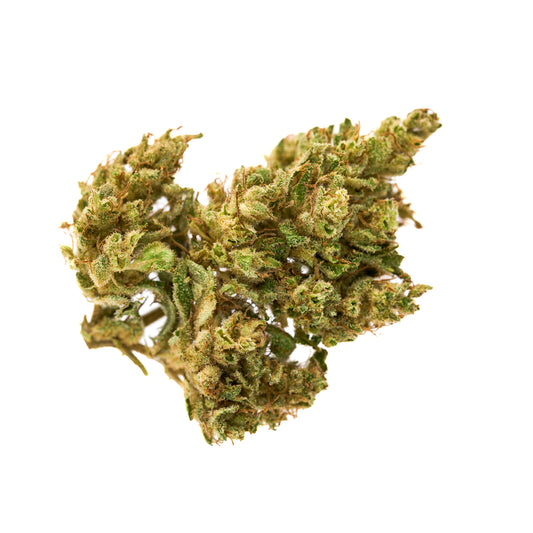
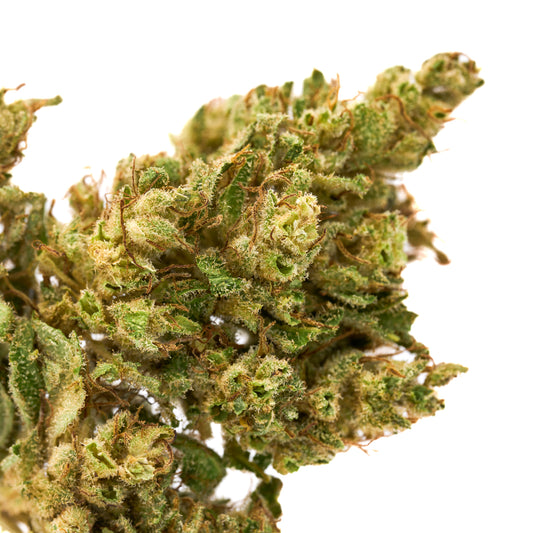
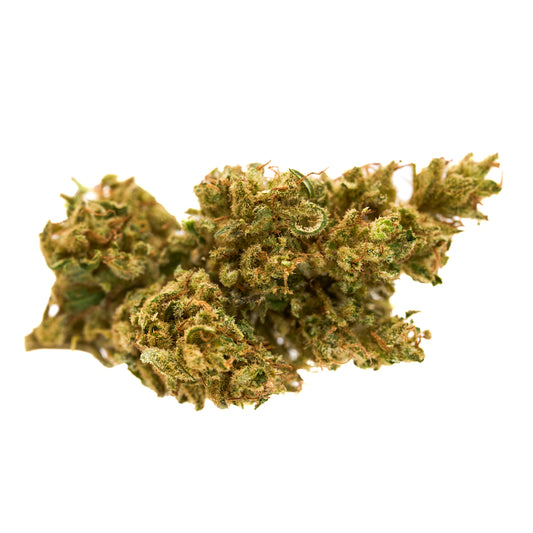
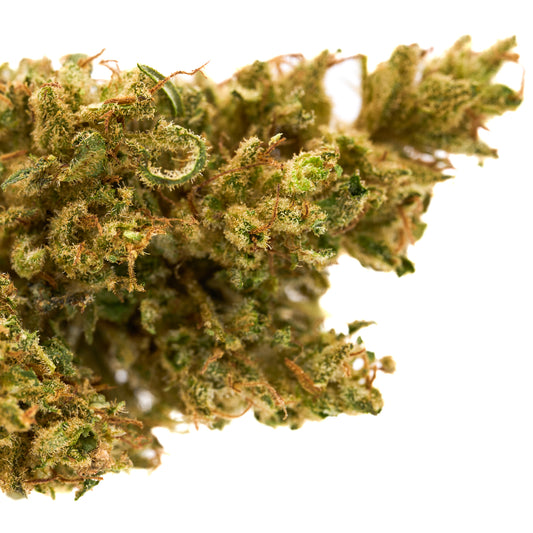
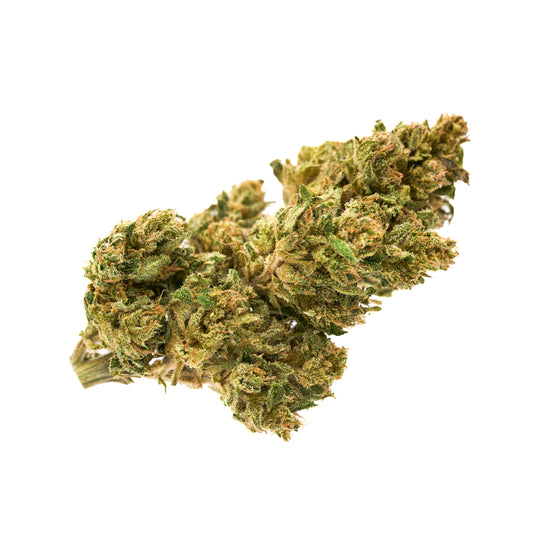
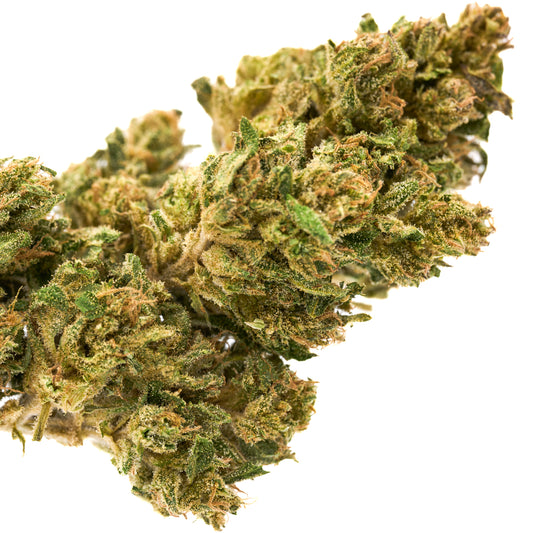



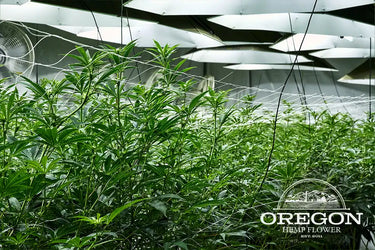

Leave a comment
Please note, comments need to be approved before they are published.